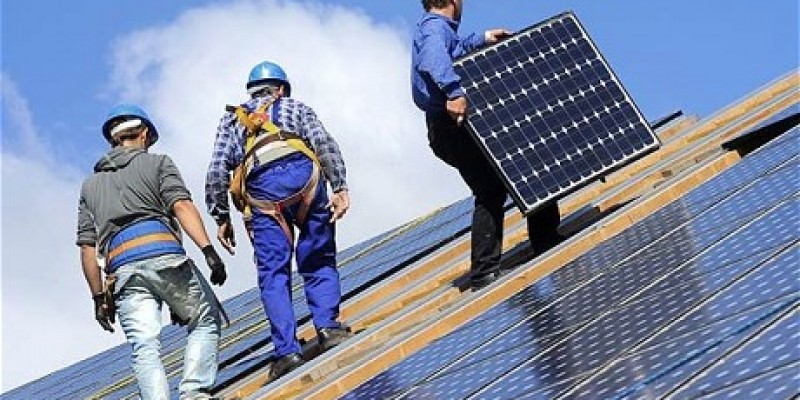Solar Photovoltaics
Adapted as a Guest Blog By CPS Client, Paul Hodson of Kaiapoi, Christchurch
As I initially started to write this article on PV I was returning from a five week stay in the UK where I had seen my biggest amount of PV I have ever seen. Due to some good government subsidies that various countries around the world have introduced there has been a bit of a mini boom of them around England. It’s a bit of a worry that the NZ government are not thinking along the same lines, but I suppose whilst they own most of the power companies (not for long) , it’s not in their best interest to encourage consumers to go either off grid or grid tied with PV and produce either some or all of their own power.
As I specialise in many Eco-type systems and technologies, I learnt back in 2003 when I came here to live that both NZ and Australia are the best places in the world for solar radiation and hence installing either Solar Water, which I have had since I got here, and also Solar PV which I recently have installed, It’s a bit of a no-brainer really. Yes the economics have had a big role to play and it’s a bit of a wait to get your money back in some cases, but to be honest, what money do you ever get back when you buy a new car and sell it ten years on, or what do you have to show from a night on the booze!
I decided it was the right thing to do and one day I will get my money back. All I wanted was to reduce my power bills as much as I can, as my pet hate is giving it to the power companies when I could be using the savings to do things I want to do: holidays, fishing trips etc.
I have been thinking of installing PV for a few years but the costs back then were scary. Only recently has it become so low due to world demand that its now within easy reach. (A good rule of thumb is between $3.5- $5 per watt, so a 3 KW system would be between $10,500 and $15,000. Usually around $12,000 is the norm.)
I still didn’t have the money and its pointless adding it to your mortgage – and then thanks to the Christchurch Earthquake along came a saviour. I sustained some damage to my drive and fences and when I asked the insurance company for progress, they offered to pay me out. So rather than stick a load more concrete on my drive, only to park my car above it. I repaired it myself and invested the money on a grid tied PV system.
I initially opted to go off-grid and started to buy in the component parts I needed but then after realising that the batteries are a maintenance issue and need replacement after approximately five years and cost and arm and a leg for good quality ones, I then opted for a grid tied system.
The off-grid system I will discuss later too as I kept this too.

Off-grid systems
The off-grid systems are perfect for locations where installing power to the national grid system is not cost effective. It can cost tens of thousands of dollars to go short distances to a local power pole in remote areas and therefore you don’t really have a choice but have a battery system. Many people also have a wind turbine too as they usually have wind in good quantities in remote areas.
These systems need regular maintenance but the benefits are that all the power you use is free. Another issue with these is the efficiencies of the systems are all down to the batteries and charging and I know first-hand that there are companies out there working on this as we speak.
If you imagine generating 12, 24, 36 or 48 V DC from a PV panel and then via a charge controller charging a bank of batteries with it, there are losses which are large too. Then if you want to use this stored power as mains electric you then have to transform it again to 230 V AC using an inverter and again you get further losses. Add all this to the maintenance required of replacing the batteries and it is not the better system if you have a choice. Hence why I changed to grid-tied system.
Photovoltaic (PV) panels
These panels come in all shapes and sizes and although they are the best solutions regarding power generation from the sun so far, they are not very efficient at doing so.
There are all sorts of different types and also there are paint coatings and glass coatings that can be used to generate power, but PV panels are the best technology yet.
My system uses 24 V DC panels, which are capable of producing 37 V DC in full sun and temperature ranges. The colder the panels remain, the more efficient they are. I now have 14 panels at 250 Watts per panel, which means 250 x 14 = 3500 Watts or 3.5kW.
The inverter is rated at only 3kW, so tops out in summer. I loose this extra 500 Watts for the short times it’s above the 3kW.
The orientation of the panels and pitch is a factor that you may want to consider, but its not the be all and end all. Ideally, you want them facing north and at a pitch at 30-40 degrees depending on your latitude, but I have seen panels facing due west . The pitch issue is designed to give you a average between the winter sun angle and the summer sun angle and some people go to extraordinary lengths to have adjustable pitch panels and tracking panels.
Regarding pitch mine are down at 15 degrees, hugging my roofline. They would not last long in Norwesters if I pitched them up.
The connections required are simple for Solar PV, not like solar plumbing systems and seriously if I wanted to take my PV system with me I could have it all down in a few hours and with no detriment to the dwelling.
The system, Under the Electrical regulations needs to be fixed by a qualified Electrician and also have approval from your local power company, but CPS take care of all this for you. You are only usually allowed up to a 10kW system, but a 3kW system would the standard size for a normal dwelling.
Power Savings
Solar PV really is a no brainer in my mind and I have the proof to back this up. As with any power, the best way to save on power in any case is to not use it in the first place, but if you do have to use it, which most of us do, then you need to make some smart choices.
During the winter months my solar way chucking out about 9kWh per day and now in summer its doing around the 23-24kWh mark in full sun. Max is now 25.3kWh one day in Jan 2014! Yippee. Obviously it does bugger all in the rain, in winter, but will do quite well in an overcast day, about half or 8-10kW in summer . There is a strange phenomenon that I discovered and that is it generates more on a sunny cloudy day than it does on a blue sky day and also the windier the better.
So a sunny, cloudy, windy day, like a Nor-easter, is the best as the clouds refract the UV back to earth and the wind cools the panels making them more efficient.
Solar systems are best installed on dwellings where someone is at home during the day, or for businesses where they have people there all day. But even if you’re not and selling it all back as opposed to using as its generated, it’s still OK and gives you a good return – it will just take you a bit longer, that’s all. Elderly persons’ housing, offices etc. are ideal, but schools are hit and miss with the fact that they are off on summer holidays when the power generation is at its highest. Lyttelton primary has a 10kW system installed and is over the moon with it.
As it’s summer now I have theoretically not had a power bill for the last few months as although Contact are billing me each month as usual, I am sending more back to the grid than I am using and hence they owe me more than I owe them, which is a great feeling. You could offset this return against your winter bills or leave it mount up, but I have been invoicing them to pay for my holidays and usual Christmas expenses.
If you’re thinking of going PV, then don’t hesitate to give any of the companies I used a call for advice first. And if you want to come and view mine and have a chat, that’s not a problem either. I am starting to notice a few more system around Christchurch now too.
More Information
The cost of your solar energy system varies according to the number or size of the array (number of panels) and other system requirements. We are happy to provide you with an free assessment and quote.
